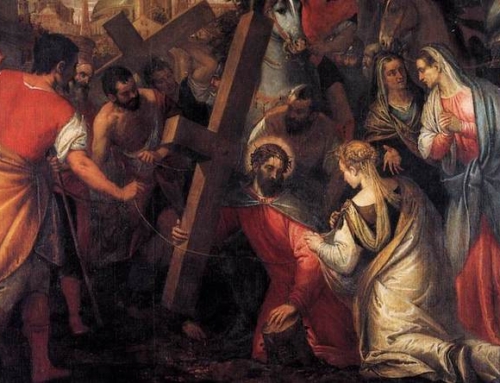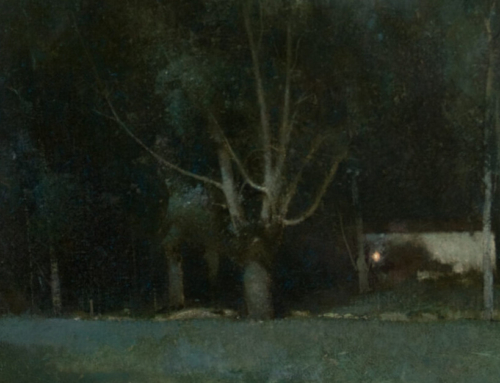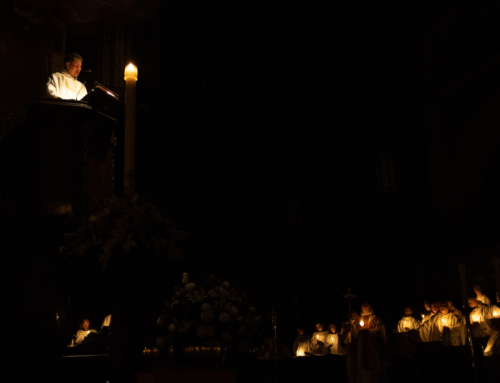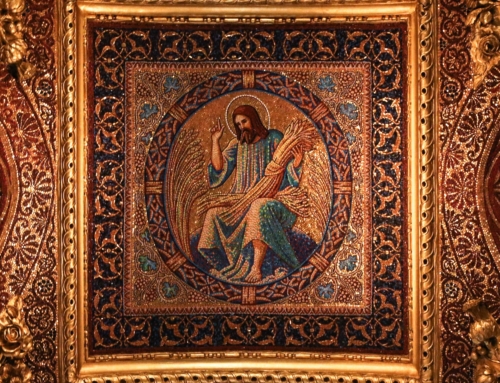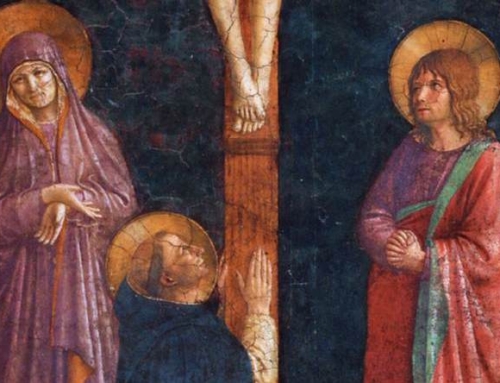The Sights and Sounds of Christmas:
In the Bleak Midwinter, Christina Rossetti
The first time I listened to In the Bleak Midwinter, I rolled my eyes when I heard in the first verse: “Snow had fallen, snow on snow, snow on snow.” The wintery, Christmas nostalgia that played out in the repetition of “snow” was soporific and sappy to me. There and then I took an unjust disliking to the carol and resented hearing it played or having to sing it. Eventually, I was willing to revisit my dislike, and what I found modified my opinion of the carol.
Originally a poem by Christina Rossetti, In the Bleak Midwinter depicts how God, by his Incarnation, brings the created world that had been wallowing in sin back to himself. By going out into the world, the Son of God melts away man’s resistance to him and returns man to God in love.
The first verse sets the scene for the Incarnation by describing the state of the created world. Creation was barren, a “bleak mid-winter” moaning under “frosty winds.” Creation was intransigent and hardened to God’s purpose for it: “Earth stood hard as iron, water like a stone.” Creation was subject to a repetitive futility reminiscent of Ecclesiastes 3: “Snow had fallen, snow on snow, snow on snow.” Without her Creator, there was no enduring joy that could be brought out of this repetition; there was only continual snow in an endless winter that smothered all mirth and blinded any wayfarer traveling through it.
The second verse shows us something of the Son’s divine mission. God altogether transcends the created world; creation can neither change him nor contain him: “heaven cannot hold him nor earth sustain.” But through the visible mission of the Son, the Son is sent by the Father and “begins to exist visibly in the world through the flesh he assumed” (ST, I, q.43, a.1). God is not changed, but creation is changed when she receives her Lord who comes to dwell in her as a man. Although “heaven cannot hold him,” “a stable-place sufficed/The Lord God Almighty, Jesus Christ.”
And thus the Son—the Second Person of the Trinity—comes as a human infant. We discover how, in the third and fourth verses, men and even animals can see the Incarnate Lord. Creation is no longer hardened but now adores her Creator: “Enough for him, whom angels fall before, the ox and ass and camel which adore”; his mother “worshipped the beloved with a kiss.”
It is in the final verse that we see our proper response. We were that creation intransigent in our sin while the Lord sought to bring us to himself. Enslaved to sin, we could not hope to live out what we were put on earth to do. As long as this was the case, we could not hope to be happy; instead, we had “invited death, considered it a friend, and pined for it” (Wis 1:16). Christ’s Incarnation makes us responsive to him when he calls us away from death: “What can I give him, poor as I am?” For in a manger lies a newborn infant. In a manger lies the Divine Word, the Son of God. The charity that motivated God to live as one of us—even as a helpless infant—melts away that “water like a stone” and enflames us with a love we are helpless at expressing. “What can I give him, poor as I am . . . Yet what I can I give him: give my heart.” Through Christ’s charity, we return to God.
It was worth initially disliking this carol since, through my dislike, I eventually found it more endearing. There is something soporific and sappy about a world that does not turn toward God; it is a world that is ultimately empty and void of meaning. It is the cold, colorless snow: charming, maybe, but hostile to life and color. Nevertheless, by becoming man, God renews that world and infuses it with his warmth and light. Who, upon seeing his Creator and Lord lying as an infant in a manger, would not in charity respond in the same way as the poet? “What I can I give him: give my heart.”
✠
Photo by Hide Obara on Unsplash


